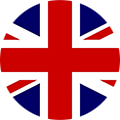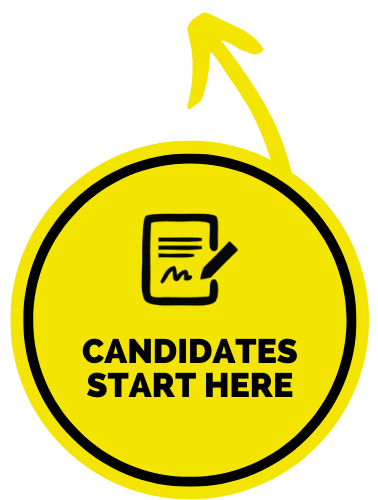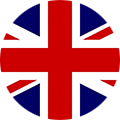Posted: 10 February 2025
Job Details
JOB PROFILE: FLIGHT OPERATIONS INSPECTOR
– HIGH/LOW CAPACITY
1. POSITION DETAIL
JOB TITLE / FUNCTION Inspector: Flight Operations – High/Low Capacity
LOCATION: Midrand
GRADE LEVEL C4
OVERALL PURPOSE OF THE JOB
Overall Purpose of the Job
To determine the operational level of safety that the prospective and approval holder can achieve and does in fact achieve in actual operations. Through evaluation (assess), monitor (conduct periodic and unannounced surveillance) of compliance to
operations of an aircraft:
a) making recommendations regarding the issuance or amendment of the AOC and the associated operations specifications, and the operator’s competence to continue to exercise the privileges of the certificate;
b) making recommendations concerning any special conditions that, considering the investigation, may need to be imposed;
c) informing the operator of any deficiencies needing rectification; and
d) making recommendations concerning appropriate enforcement action.
Assesses and make recommendations on the compliance potential and ability of an aircraft for certification and licencing
purposes.
2. EDUCATION (FORMAL QUALIFICATION REQUIRED)
MINIMUM
Grade 12
Hold a valid Airline Transport Pilot License
IDEAL
Commercial Pilot License with Frozen ATPL
3. EXPERIENCE (MINIMUM EXPERIENCE REQUIRED – TYPE AND NUMBER OF YEARS)
JOB TITLE / FUNCTION MINIMUM TIME SPENT IN JOB
Pilot 1500 hours as a pilot-in-command of civil or military air transport
aircraft
4. POSITION IN THE ORGANISATION
Organisation SA Civil Aviation Authority
Division Aviation Safety Operations
Department Flight Operations
Section Various
Position being Evaluated Flight Operations Inspector
1st Line Manager Manager: Flight Operations
2nd Line Manager Senior Manager: Flight Operations
Direct Subordinate(s) No Subordinate Positions
5. POSITION DESCRIPTION
KPA / MAIN OUTPUTS AND RESPONSIBILITIES FOR THIS POSITION
DETAILED DESCRIPTION WEIGHING / TIME SPENT
Site and Airline Inspections
• Conduct routine inspections on station facility, apron, en-route operation, and base, etc
• Carry out oversight or checks considered necessary at prescribed intervals as per the risk and performance-based orientation
• Assess the effectiveness of the operator’s SMS and the level of resources allocated to it.
• Conduct inspections or oversight in accordance with an established work programme and applicable standard procedures and instructions.
• Investigate and report, as required, possible violations of the basic aviation law or related safety operating regulations and rules;
• Continuously review the operator’s pertinent documentation, staff, systems and governance frameworks
• Advise the operator, in writing, of any significant deficiency, requesting a proposal for remedial action.
• Conduct follow-up on inspection reports to ensure that appropriate action has been taken in a timely manner.
• Submit reports on each inspection or investigation in the manner prescribed, and (capture the relevant information on the applicable database / administration system) complete and process the applicable inspection forms.
• Keep appropriate CAA inspectorate staff informed on all aspects of the current operation and projected developments in the company including changes in executive personnel, in assigned responsibilities and in th operator’s organization in general; and • Conduct qualification, approval and supervisory activities with respect to personnel proposed as designated examiners by an operator
• (Facilitate the qualification, oversight and approval over the operator’s designated examiners.)
• Proactively research, develop and propose the specific standards to be applied in the area of operator operations. 90% Proposals and Revision of Standards
• Proactively research, develop and propose the specific standards to be applied in operator operations.5% Communications and Safety Promotion
• Project a satisfactory image of the SACAA to all stakeholders.
• Provide industry feedback to the Authority.
• Promote aviation safety by proposing improvements in operational requirements. 10%
6. Competencies (Core)
CORE COMPETENCIES PROFICIENCY LEVEL
Judgment and Decision Making Intermediate
Problem Solving and Analysis intermediate
Attention to Detail intermediate
Planning and Organising intermediate
Technological Acumen intermediate
Innovation intermediate
Stakeholder relationship management and engagement intermediate
Self-Leadership intermediate
Resilience intermediate
Learning Orientation Advanced
Communication intermediate
Report Writing Advanced
Interpersonal Skills Advanced
Displays Diplomatic Protocol Advanced
Risk Management intermediate
Cross-Functional Collaboration intermediate
Learning Agility intermediate
Customer Service Excellence intermediate
Project Administration intermediate
Time Management intermediate
LEADERSHIP COMPETENCIES PROFICIENCY LEVEL
Leading Self Emotional Intelligence
Adaptability
Influencing
Learning Agility
Accountability & Responsibility
Leading Others Leadership
People Management
Diversity Management
Negotiation Skills
Monitoring and Evaluation
Conflict Management
Developing Others
Leading the Organisation Systems and Strategic Thinking
Project Management
Business Acumen
Change Management
Corporate Governance and Fiduciary Duties
Financial Acumen
Diplomacy
Decision Making
FUNCTIONAL / TECHNICAL COMPETENCIES PROFICIENCY LEVEL
Investigation Skills Intermediate
Research and Root cause analysis Intermediate
Managing Complexity Advanced
Safety Management Advanced
Analytical Skills Advanced
Monitoring and Evaluation Advanced
Flight Operations Oversight
Quality Control
Risk and Performance-Based Orientation
7. Other Special Requirements
• All tasks and responsibilities as specified by the CAA Quality Manual and CAA Quality Manual Procedures references,
• including references to all staff and generic terms such as executive management.
• 24/7 availability.
• Willing to work extended working hours.
• Willing to travel extensively.
• Work under pressure





